 Guest blog by Nancy Tupper Ling Here’s the thing. If we knew all the twists and turns of this writing journey at the start, many of us might opt out early on. It’s definitely not for the faint of heart. Sometimes in the midst of this journey, a leap of faith is required. We might decide to pivot, try a new genre, or join a different critique group. According to the Cambridge Dictionary, a leap of faith is “an act of believing something that is not easily believed.” On this road to publication, we are all taking a hop, a leap, or a gigantic jump in an effort to see our words in a reader’s hands someday. In the case of picture books, we might be praying for beautiful illustrations as well. Recently I took a literal leap of faith . . . toward my faith. It was risky. I’ve always included some aspect of my faith in my books, even if it’s simply the Latin phrase Soli Deo Gloria in my dedication, as composers Johann Sebastian Bach and George Frideric Handel did long ago. Simply put, the “glory goes to God alone.” In the last few years, however, I had a desire to submit anthologies and picture books that were more faith-centric. This meant taking a new road to publication, including joining with agent, Anne Marie O’Farrell, who believed there was a market for these books. Thankfully, she soon met Bunmi, Ishola, an awesome editor from Penguin/WaterBrook, who was in search of manuscripts with God at their heart. Turns out ONE PERFECT PLAN: THE BIBLE'S BIG STORY IN TINY POEMS was a good fit. Of course, none of this happened instantaneously. A lot of side streets were taken on this journey, and soul-searching as well. Certainly, I learned a great deal about myself and my priorities along the way. In case these tips might help you make a leap or two in your own writing career, I offer a few to consider: Heart and Soul If you do nothing else, take time to think about what makes your heart beat, and what stirs your soul. When you think about it, we’re all writing for someone. Who are you picturing reading your future book? What topic or idea won’t let you rest if you don’t write it? The idea for ONE PERFECT PLAN sat in a drawer for a long time. Really, a LONG time (since 2007). Still, the idea kept coming back, giving me a tap on the shoulder. It began with the premise that one event, one promise, or one person can make a huge difference in this world. Plus, I wanted to tell epic Bible stories in short poems so children might memorize them, and also read the entire Bible (its essence) in one sitting. That idea stirred my soul. What stirs yours? 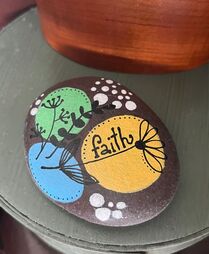 Mentors We hear a lot about reading mentor texts, or finding comparative stories, but who are the authors out in the world whom we admire most? Who’s already taken that leap of faith and is writing those stories that reflect their passion and purpose. For me, it was authors who weave their faith into their stories and their lives, mentors like Nikki Grimes and Mitali Perkins. I’ve also learned that traveling this road with a book buddy or two is key, like Janet Costa Bates and Lynda Mullaly Hunt, to name a few. As long as you’re open to learning more about this field of writing, you’ll surely find a mentor to guide you along the way. Who do you admire? Post-Its & More We all need a word of encouragement, or two or three, in this publishing business. The question is: Who are you listening to? Many times after a number of rejections or revisions, it’s hard to keep on writing. It’s hard not to hear those negative voices. So I’ve taken to posting a lot of sticky notes on my bathroom mirror, in my car, and on my laptop. They are hope-filled. I even leave some for my husband and daughters now and then. Sometimes it’s a Bible verse, like this one: "Now faith is the assurance of things hoped for, the conviction of things not seen" (Hebrews 11:1) Or, it could be as simple as “You’ve Got This!” And you can never go wrong with a Mary Oliver quote like: “I want to think again of dangerous and noble things. I want to be light and frolicsome. I want to be improbable, beautiful and afraid of nothing, as though I had wings.” And when you run out of encouraging words, there are times when a friend gifts you a Kindness Rock with just the right words on it to inspire you. Think about the gifts you’ve received. 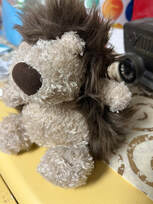 Storing Up Treasures Even beyond the inspiring words, I like to collect tangible objects that remind me of my stories. When I look at these treasures, it helps me to feel a sense of reassurance that someday the manuscripts they represent might become books. Long before DOUBLE HAPPINESS was accepted by Chronicle Books, I discovered a sweet pencil box in an antique shop that had the phoenix and the dragon painted on the cover. In Chinese tradition, this represents double happiness (usually at weddings). That box sat on my writing desk for years, reminding me of my dream for that book. Even now, I have one story that has yet to be accepted with a hedgehog character named Phoebe. Trust me, this little fluffy hedgehog gives me hope that Phoebe may grow into something more someday. Sometimes it’s the littlest things that keep us inspired and maintain our faith. Generosity This has been my mantra: “It’s a long journey to publication. Yes, it can take a leap or two of faith, but all along the way practice the art of generosity.” Even now I need to be remind myself of this goal. I’ve become a stronger writer in spite of or because of the mistakes I’ve made along the way, and I want to encourage others that getting a book published is possible. One of my favorite poetry teachers was a quiet, soul-filled man named Donald Sheehan who ran the Frost Festival in Franconia, NH, for many summers. Daily, he reminded the participants that while we might be desiring to break into the world of publishing more than anything in the world, if we’re unable to have a kind and generous spirit along the way, we’re missing the essence of the journey. I couldn’t agree more. So, take heart, and practice some soul-searching. You may discover a sharp pivot is in your future, and it might be the very best move you will make for your writing career. Certainly, I thought this publishing journey would go a lot smoother and faster, but it gave me time to become brave enough to pursue a book that showcased a faith that’s important to me. Cultivate the art, but keep your eyes wide open for the gifts you’ve received already: In Mary Oliver’s words, “Sometimes I need only to stand wherever I am to be blessed.” 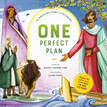 Nancy Tupper Ling is a children’s author, poet, book seller, and librarian. ONE PERFECT PLAN: THE BIBLE'S BIG STORY IN TINY POEMS (WaterBrook, 2023) is her 6th picture book, with two more on the way in 2024 including BLESS THE EARTH: A COLLECTION OF POETRY FOR CHILDREN TO CELEBRATE AND CARE FOR OUR WORLD (The Crown Publishing Group, 2024) which includes 24 Carrot Writing founder Amanda Smith’s poem, “Wonder,” and HEARTS IN MY POCKET. Nancy is also the author of THE STORY I'LL TELL (Lee & Low, 2015), DOUBLE HAPPINESS (Chronicle, 2015), THE YIN-YANG SISTERS AND THE DRAGON FRIGHTFUL (G.P. Putnam's Sons Books for Young Readers, 2018), MY SISTER, ALICIA MAY (Pleasant Street Press, 2009) and FOR EVERY LITTLE THING (Eerdmans Books for Young Readers, 2021) with co-author, June Cotner. To learn more, visit www.nancytupperling.com. Read our review of ONE PERFECT PLAN here.
2 Comments
 by Amanda Smith One of the ladies in my ceramics class, let’s call her Dee, recently made a set of cat dishes for her friend, each dish featuring one letter of the cat’s name, Mozart. One fine day in class, we were all struggling. Like really struggling. Unable to center. Unable to throw. Exasperated, Dee left her wheel for the kiln room to check whether the set of dishes had been fired. She reappeared, holding four dishes that spelled Z-A-R-T. “We’ve lost Mo,” she said. “That’s what’s wrong. Our Mo-jo went missing.” And we were stuck with Zart. Let’s be real. The last couple of years had offered more than enough incentive for Mo to pack his inspirational bags and seek greener pastures. Some of us lost our creative Mo early on in the pandemic, while others had managed to hold on, tooth and nail, for longer. But I haven’t met a single creative over the last two years that hadn’t at some point felt stuck with Zart. Deflated. Incomplete. So what happened in the studio when we discovered the loss of Mo? Each of us dealt with the bad pottery spell differently. Dee is a power-through kind of person. She kept throwing. At the end of the three hours, she had four sloppy piles of clay drying on the plaster table – evidence of four collapsed pots. But she also had two lovely bowls. Peg decided to abandon the wheel for the day and instead focused on glazing some of her vessels that had been bisque-fired– a differently challenging skill, and a good change of pace. I turned my back on the blasted wheel and affixed handles to mugs that I had thrown and trimmed previously. On a whim, I decided to carve designs on the mugs. I got lost in the joy of line and form and measurable progress. The next open studio, Mo was still missing. Dee, Peg and I together decided to hand-build little cheese boards. Collectively we figured out the process, fine-tuned each other’s technique, got expert tips from our studio’s resident master hand-builder and made something pretty cute. Confidence somewhat restored, and bravery bolstered by mutual encouragement, we left the studio rejuvenated that day. So why am I sharing my ceramic woes with you, dear writer? Because, just like me, you might have lost your writing Mo. What to do until Mo returns?
Complete!
Along with the lost bowls, our Mo-jo returned. Did it have anything to do with those cat dishes? Likely not. Did it have everything to do with not giving up even when we felt like it? Absolutely. Keep writing, work on other writing related stuff, fill your well with the frivolous, and commiserate with co-writers. But don’t dare give up. Like a stray cat, Mo will return! (With special thanks to always inspirational DE and PC.) 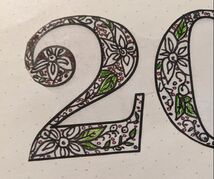 ~ by Amanda Smith The sweet time between Christmas and New Year is when I usually ponder writing goals: What worked the previous year? What didn’t? How far did I come? Where am I heading? And my trusty bullet journal serves both as memoir and roadmap. In preparing my bullet journal for the new year, I wanted to write the year 2022 for my cover page in a unique way. Last year I had handwritten it using brush pens, which was fine, but I felt that the new year deserved some more flair. So, after playing around a bit, I landed on something I’ve never done before – Zentangle. Using my inspiration quote for the year, I knew I wanted something botanical, and after using WordArt to set the outline of my numbers and googling some Zentangle designs, I set to work. It took some time to find my rhythm, but I finally figured out the scale of the design and the limits of my chosen font and everything went fine and dandy with that first two and half the zero. 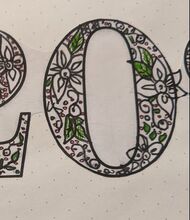 But all of a sudden, a little flower decided to jump the outline. “Huh,” I said. “Why are you squashing me like this?” asked the flower. I sat back and stared at that rebel flower, the sharp ends of its petals stubbornly poking outside the soft rounded line. Maybe it had a point. Maybe it didn’t have to be all neatly contained within the oval line of the zero. What if the flowers bloomed outside the lines of the other twos?  I loosened my design. And I listened to the flowers. And I watched them grow and BLOOM! And as I worked, I thought about my goals and hopes and dreams for this year. To reach past limits. To listen to my art. And to Bloom! As you think and plan your writing goals for the new year, I want to encourage you to do the same:
During the month of January, Annie, Kelly, and I will be posting our yearly goals into the 24 Carrot Writing Goals tab. Take a look (you can also see my complete, blooming 2022 zentangle there) and then set your own goals and dreams for this year. And be sure to post them somewhere you will see them often.
Together, let’s burst out of the constraints this last year or past habits might have placed on us. Let’s become green-thumbed curators of our vibrant, fragrant story-gardens. 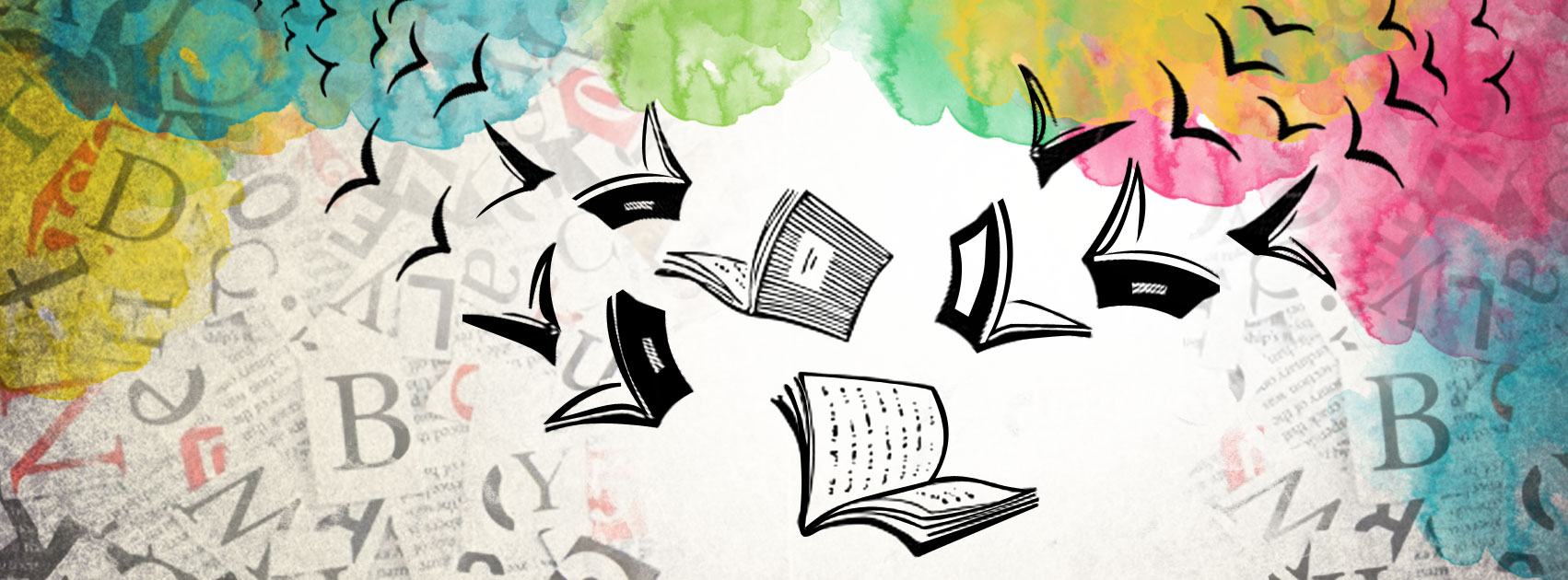 ~ By Amanda Smith In last week’s blog, Lindsay Ward encouraged us to lean into our creativity and reinvest in our goals during this truly bizarre time. For some of us, writing in the midst of quarantine feels like sanity and welcome routine. However, I have heard other writers mention that they are unable to write, that they are not in the head-space to be creative. And others’ writing time is consumed by keeping young children on track with school work, or working longer hours from home. So how do we keep our writing goals? At 24 Carrot Writing we have always proposed two kinds of goals: Creative goals and craft goals. The beauty of setting these two kinds of goals, is they access different skill-sets and even different brain hemispheres, so we can always keep moving forward in one area when the other seems inaccessible. If you are happily plugging along with your creative goals, writing your story and meeting your word-count targets, carry on. You’ve got this! However, I would urge those writers who feel as if their muse is quarantined in a whole different zip code to lean into those craft goals. Here are some ideas:
These last few ideas are craft/ creative cross-overs:
Above all, feed your creative soul with what brings you joy! If writing doesn’t bring you joy right now, that is okay. Step away. Follow a few online watercolor tutorials. Play with clay. Write some poetry. Go dig in the garden. Make music. Sew a few face masks. Because your marvelous mind will be puzzling at your story, carving out your characters, and coming up with fresh ideas, all waiting for you when you are ready to pick up the pen again. 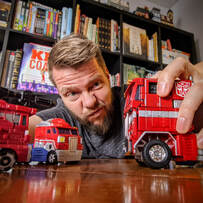 Guest Blog by Rob Justus Hey there beautiful reader! This is author, illustrator, nice guy, Rob Justus. The lovely people at 24 Carrot Writing have asked if I could contribute a couple points on how to begin your journey into the world of creating graphic novels. Now I know, I know, who the heck is this guy? I don’t even have a graphic novel published!....But I will. Right now, I’m the author/illustrator of the amazing KID COACH picture book, but come Fall 2021 my first graphic novel series, DEATH AND SPARKLES, will be flying off bookshelves! So how did I get here? How did I go from picture books to middle grade graphic novels? Well, I was told by a few people that middle-grade graphic novels are a booming segment of the book market, and that my humor and storytelling might be a could match. That’s when I saw dollar signs dancing in my eyes! Muh-ha-ha! Just kidding. Everyone thinks that writing a picture book is easy. It is really freakin’ hard!!! You’re generally constrained to 32 cohesive pages, where every single word is scrutinized over and over. With graphic novels, there’s a little more room for my ideas to run around. And run around I did! 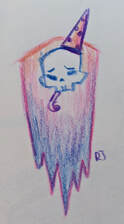 It starts with character When I start a story, it starts with a character that I’ve sketched. These characters tend to have something that stands out from all the other things I’ve sketch. They have a life to them. For DEATH AND SPARKLES, it started with me drawing random skulls. Those skulls evolved into this: It was a fun, simple, easy to draw character, but if I was going to make Death the central part of an ongoing narrative he probably needed a little more visual emotional depth...which translates to: Dude should at least have a mouth. From there, and really just goofing around with some friends, we gave this serious looking character a buddy. Something that was the exact opposite of the grim reaper. A pudgy little unicorn! Originally, I planned on aiming these characters at younger kids, and having the graphic novel set up as a simple sitcom with each chapter being a funny situation. I pitched this to my agent and she politely told me it was a steaming pile of poo-poo caca. Then she gave me the most important piece of advice I’ve gotten in this crazy journey I’ve taken to become a real author... World building WORLD BUILDING changed everything. My agent told me to write lists of personality traits for each character. How they react to certain situations. How they feel. Sometimes I just wrote lists of random questions: How does Death feel about swimming? Why would Sparkles want to be friends with Death? How does Death feel about death? How can I include cupcakes? Would Death have a pet? Once I had an idea of who Death and Sparkles are as characters, I began to define the world they live in. Where does Death live? How does he travel around? Does Sparkles do anything for himself? Who’s in his entourage? Are unicorns descendants of dragons? From there I could start to populate this world with other secondary characters and antagonists. Because I spent so much time defining and building this world it became SO easy to write. I knew how the characters would react to different situations, how they’d deal with conflict and how Death and Sparkles would grow to become best buds. I even know how their friendship is going to evolve over the next six books! That said, my agent was worried I’d struggle writing something longer than 32 pages, with our goal to have a nice arc over hopefully 120 pages. All the work beforehand let me run wild! Just a mere 275 pages later we had a fully sketched out dummy ready for submission. DEATH AND SPARKLES is easily one of my proudest achievements as a writer and illustrator. Scrivener I’m a firm believer in just doing your thing. As long as you’ve got a pencil and paper you’re good to start creating anything you want, but I will plug one little thing that helped me immensely. A little program called Scrivener. It’s a writing program that let me keep all my notes in one place, while having a great outlining/cork board/cue card thingy. Go check it out. Best $20 I ever spent. I grew up reading and wanting to draw comics when I was a kid, but “chose” the safer options in life and got a comfy job as a consultant. When I decided to leave all that behind and switch to a creative career, it felt like things were coming full circle. This is what I’m supposed to be doing. I can’t wait to show the world I built for DEATH AND SPARKLES in Fall 2021, but in the meantime feel free to check out my picture book KID COACH. I’m author, illustrator, nice guy Rob Justus, and hopefully you found this ramblin’ insightful. Shine on, people! To learn more about Rob please visit his website at https://robjustus.com/ or find him on instagram at https://www.instagram.com/robjustus/. Rob is a member of The Soaring '20s High Flying Picture Book Debuts. Find all The Soaring '20s authors and illustrators at https://www.soaring20spb.com/.
You can order a copy of KID COACH here.  by Annie Cronin Romano Most writers keep a pen and paper handy to record story ideas when inspiration strikes. You see something that captures your imagination or overhear a phrase that causes your writing detector to go on high alert, and you quickly scribble it down. Perhaps you write it a in a small notepad, or maybe you jot it down on a napkin or placement. You may even write it on your hand if there’s no paper available. I have done all of those things. Sometimes I tear out a newspaper article that has sparked a story idea or print out a news story or photograph that made my writing radar start beeping. Eventually, most writers have a folder or notebook stuffed with scraps of paper—a collection of golden story nuggets waiting to be mined for their potential. But when you finally cull through those ideas, it can be a daunting task. I recently decided to take on my “idea folder.” I took it out of my file cabinet and placed it on my desk. Where it sat. Staring at me. Cruelly. Mockingly, even. Then one day I was out browsing in a home store and spotted a display of home office supplies. As a writer, desk and stationary supplies are like candy to me, so I walked over to explore. There, on top of the pile of journals, was a hard cover spiral notebook with the words “BIG IDEAS” (typed in extremely small print, ironically) on the cover. It was fate. I bought the notebook and took it home to introduce it to my idea folder. Big Ideas notebook, meet Idea Folder. Idea Folder, I love you, but you’re a mess. Meet Big Ideas notebook. 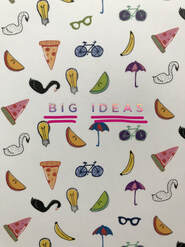 I went through my scraps of idea notes and, one by one, began writing those sparks at the top of each notebook page. I left the rest of the page blank. One idea per page with the blank page below for brainstorming. As I have time, I open to a page, read the idea at the top, and brainstorm story thoughts, plots, characters...anything that comes to mind. Sometimes it’s a doodle. Sometimes it’s a list. Sometimes it’s a diagram or several sentences. Whatever it takes to play with the idea and see what potential stories I can tease out of it. This notebook system keeps my ideas in one space, like a folder, but organized for easy access with blank space for development. It has become the garden where I plant my story seeds and then tend to them to see what sprouts. So go buy yourself a notebook for your Big Ideas--you know you love shopping for office supplies! Maybe even get some colorful pens to add to the joy! Then organize those randomly scattered idea gems into the notebook. Remember, just one per page. And let the brainstorming begin! Who knows where those sparks will take you. You may get a new story blazing before you know it! 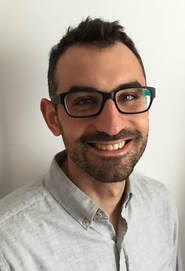 Hosted by Kelly Carey 24 Carrot Writing is thrilled to welcome author Jarrett Lerner to the site. Jarrett is the author of EngiNerds, a middle grade series starter hailed by Kirkus as a “boisterous balance of potty humor and geek pride” and a “rollicking young engineer’s adventure”. Its sequel, Revenge of the EngiNerds launches next month and I know my nephew is hoping for more side-splitting fun (and farting robots!). Jarrett knows how to have fun in his writing but he is also passionate and serious about being a contributing force in KidLit and having a positive effect on his young fans. To that end, Jarrett cofounded and helps run MG Book Village, an online hub for all things Middle Grade, and is the co-organizer of the #KidsNeedBooks and #KidsNeedMentors projects. Welcome to 24 Carrot Writing Jarrett! Can you tell us a bit about your journey to the printed page? How did you become a published author? I’ve been drawing and writing since I can remember. Growing up, I definitely had other interests and hobbies – I played baseball and guitar and skateboarded. But I was always in the middle of a book or two, and I always had notebooks lying around with stories, sketches, and ideas. And while my interest in those other things waned, my interest in reading and creating only grew, and eventually flared up into a full-blown passion. Even so, it never occurred to me that I could become a published author. In college, I was writing like crazy. And sure, I fantasized about being published. But I truly believed that that’s all such thoughts ever were and ever would be – fantasy. It took an author who I looked up to a great deal challenging me on that and encouraging me to make a go of it before I fully took myself and my work seriously. And then it took years and years to really find myself as a creator, to understand where the stories I wanted to tell “fit.” Or, to put it differently, it took years and years to accept and embrace the fact that I stopped maturing around the age of 10, and that I just wanted to write about farting robots and draw monsters all day long. Fans of EngiNerds are excited for the sequel, Revenge of the EngiNerds. When did you decide to write a sequel? How did it feel to go back and revisit Ken and his EngiNerd crew in a new manuscript? Even my earliest drafts of the first book ended on a cliffhanger (I’m a big fan of them!), and when the book eventually sold, it was bought along with a sequel. So I knew pretty much from the get-go that there’d be this follow-up. Revisiting the crew in a new manuscript was both fun and frustrating. I love these characters, and tossing them into a bunch of new crazy situations was a total blast. But there were times when I wished they weren’t so fully formed in my mind (and in the first book!), when if one or another character was just a little more like this or that it would’ve made the plotting of this second book a whole lot simpler. But that just forced me to challenge myself, and in the end, I think, I produced a better book because of it. You just announced the launch of a new series, Geeger the Robot, an early Chapter Book launching in 2020. How would you compare working on your MG books to working on this Chapter Book series? Henry James once described novels as “loose, baggy monsters.” He meant it especially when comparing them to short stories, in which there’s less room for detours and digressions and, on the part of the reader, less tolerance for “imperfection.” And if there’s a spectrum for such considerations, then poems would be at the opposite end from the novel. In a poem, a reader might notice (and be irked by) a single out-of-place syllable. I think James was onto something. With novels, I feel more free to take detours or linger in a scene a bit longer than is strictly necessary, just because it might be interesting or enjoyable. You don’t really have that luxury in shorter works. But at the same time, there’s something thrilling about chasing the “perfection” that is (or at least seems) possible in shorter works. I labor over all of my sentences. But the shorter a work is, the fewer the sentences it contains, the more “right” I feel those sentences need to be. 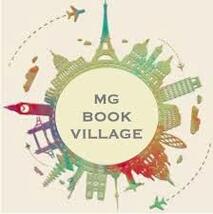 You have taken your passion for writing and used it to fuel the creation of projects and communities like MG Book Village, Kids Need Books, and Kids Need Mentors. Can you talk about how your writing journey lead you to each of these endeavors? I think my passion for storytelling and creating has always had a tendency to “spill over.” I read as much, if not more than, I draw and write. I get really, really excited about other people’s work, and want to share it with the world, and I think my involvement in the MG Book Village sprung out of that. And Kids Need Books and Kids Need Mentors – those are both projects aimed at improving and enriching the lives of kids. That’s something I try to do with my books too. While it may look like I’m scattered or that I’ve got too many irons in the fire, I see all of these projects as related. You have a great natural talent and interest in illustrating. How did you land on MG and Chapter Books and not PBs or graphic novels? Is there a PB or graphic novel in your future? I’ve been drawing longer than I’ve been writing, and growing up, the two were always linked for me. But I think school – and in particular high school and college – severed them in my mind. There weren’t any pictures in the books we were reading for my literature classes. And if I’d been caught with one that did have them, I probably would’ve been ridiculed for it. And the only time visual art was linked with storytelling was in my Art History courses in college, and then in an extremely scholarly manner. There’s a great quote from Picasso – “It took me four years to paint like Raphael, but a lifetime to paint like a child.” I learned a great deal in high school and college. But I think it knocked me off my creative track. I was learning to write like Dostoevsky and Philip Roth and talk about paintings like I was interviewing for a job at MoMA when my heart lay with 8-year-old Jarrett making his own silly comic books in the back of the classroom. Fortunately, it didn’t take me a whole lifetime to reconnect with that kid. And yes – there are some illustrated works in my future. I’m not allowed to talk much about them just yet, but if you follow me on Instagram and/or Twitter, I now and again give some sneak peeks (shhh… don’t tell my publisher!). 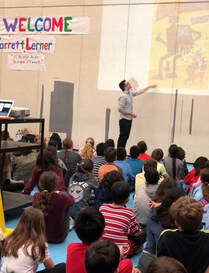 You have done an impressive number of author visits in a far reaching number of states. For example, you’ve been to California, Illinois and all over New England. How did you land your bookings? Manage your travel? And how have you planned your presentations to appeal to different audiences? I’ve been lucky to receive a number of invitations to schools. And once I have an invitation, I usually start doing outreach to try and turn a single visit into a sort of mini-tour. Last year, for instance, an educator in Chicago expressed interest in my visiting her school. I put out a call to others in the area and was able to get a week’s worth of visits. I’ve organized several other trips in just that way. But I think it’s important to say that I wouldn’t be able to do this as successfully had I not put a lot of time and effort into connecting with educators and librarians all across the country (which is something I continue to do all the time!). I truly believe that kids’ educators and librarians and kids’ book creators are colleagues, and that the more we work together, the better work we can all do. Putting in that time and effort to make these connections has enriched my life in many ways. I’ve learned SO much. I’ve made incredible friends. I’ve grown as a person and as a creator. And, more practically, it’s helped me when it comes to booking visits. 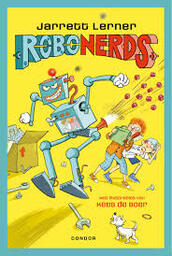 The Dutch version of EngiNerds just launched. How did you balance excitement over a foreign edition with a new illustrator doing the cover and a new title? How can authors and illustrators, who cherish their work, make space to let the creative energy of others add to it? I fully embrace the collaborative aspect of book-making. Sometimes I feel it’s a bit preposterous that authors get to have their names alone on their book covers! It’s almost always a team effort. I’ve also always subscribed to the idea that, once you put a book out into the world, it’s no longer yours – or no longer only yours. In engaging imaginatively with a work, each reader assumes a slice of ownership of the book too. I think because of all this, I find it thrilling to see what other creators do with “my” work. But that doesn’t mean I can’t question or challenge some of the choices they make – that’s part of the collaborative process too. At 24 Carrot Writing we are big on goal setting. Do you set detailed writing goals, broad yearly goals or do you fly by the seat of your pants? I think I do some combination of both – I set goals by the seat of my pants! I am never working on just one project. I always have two, three, and sometimes even four or five going at once, each of them usually in a different stage of completion (or incompletion). On any given day, I’ll take two things into consideration: (1) what I feel like working on, and (2) about how much time I’ll have to work on it. Given that, I might do some exploratory doodling, or dive into novel revisions, or work on putting together a picture book dummy. Every now and again, though, I really “land” on a certain project, and will give it my full attention and concentrated energy until it’s finished (or a draft or version of it is complete). I guess you could call it “occasionally organized chaos,” but it keeps things both fun and productive for me. And that’s huge. If I’m not enjoying the work, it shows in the results. That might not be true for all creators, but it is for me. Of course, sometimes some of this goes out the window when you’ve got deadlines. But the majority of the time, I meet my deadlines without changing things up. 24 Carrot Writing sits on the premise that authors need to set and accomplish both writing goals and the business of writing goals. How do you balance your responsibilities to MG Book Village, Kids Need Books, and Kids Need Mentors with writing your books and hitting your writing deadlines? I touched on this in an earlier question, but basically, I think it’s all about perspective, and about how you define your work and your goals. I love, love, LOVE making books. And yes, I could probably do that and only that all day every day for the rest of my life and be BEYOND content. But I don’t see making books as the only aspect of my work as a creator – or, what’s more, as the only facet of what I, as a human being, have to offer during my time on the planet. In addition to making good books, I want to more directly help and inspire kids, and I want to give back to the various communities that have supported and sustained me. With such goals, it’s not so much about finding balance as it is about finding the time to get it all done! What advice do you have for beginning writers? Embrace, explore, and celebrate the things that make you (and your creative output) uniquely you. The weirder and wonkier, the better. To learn more about Jarrett you can visit him at jarrettlerner.com/ , or find him on Twitter @Jarrett_Lerner.
You can purchase copies of EngiNerds or Revenge of the Enginerds using these links: www.indiebound.org/book/9781481468725, www.indiebound.org/book/9781481468749, www.amazon.com/EngiNerds-MAX-Jarrett-Lerner/dp/1481468723/ref=sr_1_1?ie=UTF8&qid=1547132304&sr=8-1&keywords=enginerds , www.amazon.com/Revenge-EngiNerds-MAX-Jarrett-Lerner/dp/148146874X/ref=sr_1_1?ie=UTF8&qid=1547132360&sr=8-1&keywords=revenge+of+the+enginerds . And be ready to have Jarrett in a bookstore near you! Jarrett will be at the South Portland Public Library in Maine on February 23rd and at Print Bookstore in Maine on March 12th. 24 Carrot Writers be sure to say hello!  by Francine Puckly For years I have been revising and polishing one of my manuscripts in order to get it ready for an agent or editor. It’s been a struggle, a journey sprinkled with pockets of both excitement and disillusionment. I’ve had it critiqued numerous times by my critique group members and various other beta readers. I’ve also paid for 10-page critiques, first page critiques, query critiques, more 10-page critiques and back around again. This past weekend I attended a regional conference and had two more industry professionals weigh in on the manuscript. They were in violent agreement. I continue to miss the mark. I read over their feedback several times. I had a two-hour “therapy session” with a writing colleague who is familiar with the manuscript. Then just this morning I pulled out two files of notes from past workshops and conferences—one on Beginnings, the other on Character Development. The file on Beginnings was a slap in the face. There, dated four years earlier, was feedback about my opening chapters—almost verbatim to the feedback I received a few days ago. Nothing had changed. So I either A) hadn’t learned a thing in four years, B) don’t possess the skill to fix it, or C) am locked into what has already been written and can’t break out of the word trap to fix the problems with the novel. I’m going with option C. I’m fiddling, not fixing. I’m tweaking, not writing fresh new prose. I’m trying to force stale, overworked characters to fit a pre-determined plot instead of creating fresh, fabulous characters and then sending them (and the reader) on an exciting journey that incorporates character, voice, and setting. So I’m following Lynda Mullaly Hunt’s lead. I deleted all of the drafts of that manuscript from my hard drive. (Confession: I’m not crazy. Unlike Lynda, I do have them saved to an external drive. But the drive is packed away in the deep recesses of my office closet and not easily accessed.) How do I feel after deleting five years of work? I’m scared to death! I’ve consumed every piece of chocolate in the house and thought about opening a bottle of wine at 8:30 this morning. (I opted for a decaf earl grey latte…) But I also know deep in my bones that this was the right move. I won't go back to those drafts on the external drive. I have work to do. An editor I greatly respect suggested a list of novels to study on character and beginnings. I will. I am. I will go back to the drawing board on creating, sketching and really getting to know my characters. And only after I complete those tasks will I sit down and rewrite the story. With renewed vigor. With soulful characters. From scratch.  By Kelly Carey It can happen when you excitedly present your latest work in progress to your critique group, and they take turns rattling off lists of picture books with your exact plot. Or when you are browsing the shelves at your favorite indie bookstore and find your book idea, with a stunning cover face out, written by someone else. Perhaps it was in a rejection letter from an editor that read “sorry, but we already have a similar book on our list”. The results are a stunning hit to your creative energy that can leave you with the niggling feeling that every idea you’ve ever had has already been done. The knee jerk response could be to delete the manuscript and snuggle under a blanket with a large bowl of ice cream admonishing yourself for ever thinking that you had a unique idea. I mean how could you really think your idea was original? You can! Take a breath and realize that while similar plots, themes, settings, and even characters can be found throughout kidlit, it’s your unique voice that puts the originality in the work.  Let’s take bears for example. Winnie-the-Pooh (published 1926), Little Bear (published 1957), Paddington (published 1958), The Berenstain Bears (published 1962) and Corduroy (published date 1968), are all kidlit books featuring an anthropomorphized bear as a main character. But they happily share publishing success and shelf space because each author gifted their bear with their own unique author voice. Despite these well-known bears, still even more authors have found their own original voice inside a bear main character. Nancy White Calstrom put her creative musings into Jesse Bear (published 1996) and Karma Wilson presented Bear Snores On (published 2002). What a shame if Bonnie Becker had never sent A Visitor for Bear (published 2008) out on submission because bears seemed unoriginal? What if Jory John’s delightful bear in the Already series (published 2014) never existed because John’s was worried about Winnie or Paddington? What if Ryan Higgins had trashed Mother Bruce (published 2015) because…well…bears? The kidlit world is enriched because all of these clever bears found a home in a book. Their originality comes in the personality the authors and illustrators gave each bear. In the writing, the author’s tone, style and personal touch honed by a fusion of life experience and writing skill offer up a character as unique as a fingerprint. Each author brings to their bear that special voice, their fingerprint, which makes each of these wonderful kidlit bears unique and original.
Worried that there are too many dragon books? Pirate books? Train books? Princess books? Stop! About ten years ago, an Australian comedy group called The Axis of Awesome presented their theory that dozens of popular songs were written with the same four chords. Apparently concerns about originality can stymie songwriters too! https://www.buzzfeed.com/alanwhite/73-songs-you-can-play-with-the-same-four-chords?utm_term=.gdEdQDqBzV#.ncwx93AlD6 It’s an entertaining and fascinating idea and more proof that the same ingredients don’t necessarily produce the same outcome. In the case of music, the same four chords have produced songs with vastly different outcomes. The same can be true in your storytelling. We can all play with pirates, on a high seas adventure, searching for treasure, and while our character, setting, plot and themes could arguable be identical, like the chords in those songs, we will still produce original works. The secret original ingredient is you. So go ahead. Write your bear story. Just make sure his growl has your unique voice. 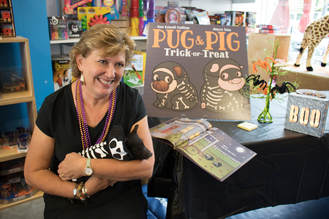 by Sue Lowell Gallion, Guest 24 Carrot Blogger I really appreciate how 24 Carrot Writing reminds us to pay attention to both parts of our split personality – writer and author. I’ve focused primarily on my author side in the past year, with my debut picture book, PUG MEETS PIG (illustrated by the amazing Joyce Wan, published by Beach Lane Books/Simon & Schuster), releasing in September 2016 and a second Pug and Pig book, PUG & PIG TRICK-OR-TREAT, which came out July 25. However, I don’t know that my writer self ever considered what it meant to market and promote a seasonal picture book, both for the publisher and the author. I think a lot of us as writers naturally gravitate toward plots that center on a holiday. Holidays are milestones in any child’s or family’s life, as well as our own. I remember holidays and traditions more vividly than the every day, whether it was choosing a Valentine for a boy in my third grade class that didn’t seem mushy (was “pease be my podner” over the top?) or “cooking” in my cousins’ toy kitchen with our hardboiled Easter eggs (until our parents found us. . . ) The inspiration for Pug and Pig’s Halloween adventure was my black lab mix’s reaction to the terrier next door dressed in a skin-tight, glow-in-the-dark Halloween costume. That’s not a story starter that works well with other settings. (However, an unexpected plus to the book has been hearing from parents of children with sensory issues that their kids relate to Pug’s dislike of his tight costume and his mask. That’s really exciting!) But the marketing slot for a seasonal book, such as PUG & PIG TRICK-OR-TREAT, is really tight. In bookstores, Halloween books go on display after Labor Day, after Back to School peaks. Last year, I was in a bookstore on the morning of Oct. 31. Halloween was already packed up, replaced by Thanksgiving, Christmas, and Hanukah. Think of the February holidays – Groundhog Day, Valentine’s Day, the Presidents. The peak time for story times or presentations using these books at schools, stores, and libraries is also less than six weeks. My local librarians confirm that Halloween books, as well as other holiday books, are checked out all year long. My kids chose holiday picture books any time of the year, too. I probably can still recite most of CRANBERRY THANKSGIVING by Wende and Harry Devlin, and that isn’t because we read it only in November. Kids aren’t particularly concerned with the calendar versus how they respond to a particular book. A seasonal book may be more attractive for guest blog posts, because bloggers like timely and topical posts. But once the holiday is past, promotion will likely seem out of place. In contrast, a birthday book or an afraid of the dark book, or any more universal theme or experience, can be promoted any time. I’m having a ton of fun with the Halloween book, although this is a crazy six weeks. Because Pug and Pig wear skeleton costumes, of course I hunted for a skeleton costume of my own. Finding something that wasn’t going to scare little kids turned out to be a challenge. It’s hard to find a friendly-looking skull. A skeleton apron seemed to be the best option. I start events without the apron on. If the kids are really young, I may stick with orange and purple beads. There’s always that tension between what we write and whether there might be a market for that manuscript. “Write what you love” doesn’t always match “there’s a place for that book on our list.” I’d be interested to know how many debut books actually are holiday books. My speculation is that a holiday book is more likely marketable after an author has other books out, or if it is a companion book or sequel featuring characters in an existing book. Come November, I’ll be focusing more on my writer self. I plan to be more organized about goal setting for writing and revising as well as my author/business responsibilities. However, as I make my way through this hectic October, I’ve rediscovered that candy corn is a fine carrot for me. And fortunately, it’s on the shelf all year long. |
Peruse blogs for advice and tips from KidLit creatives.
Categories
All
Archives
April 2024
Click to set custom HTML
Click on the RSS Feed button above to receive notifications of new posts on this blog.
|
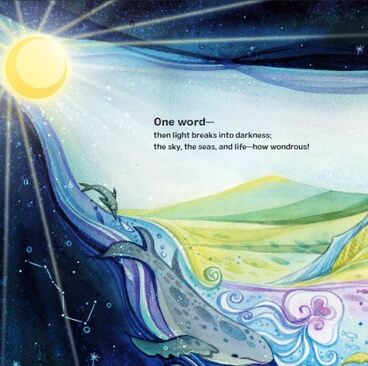
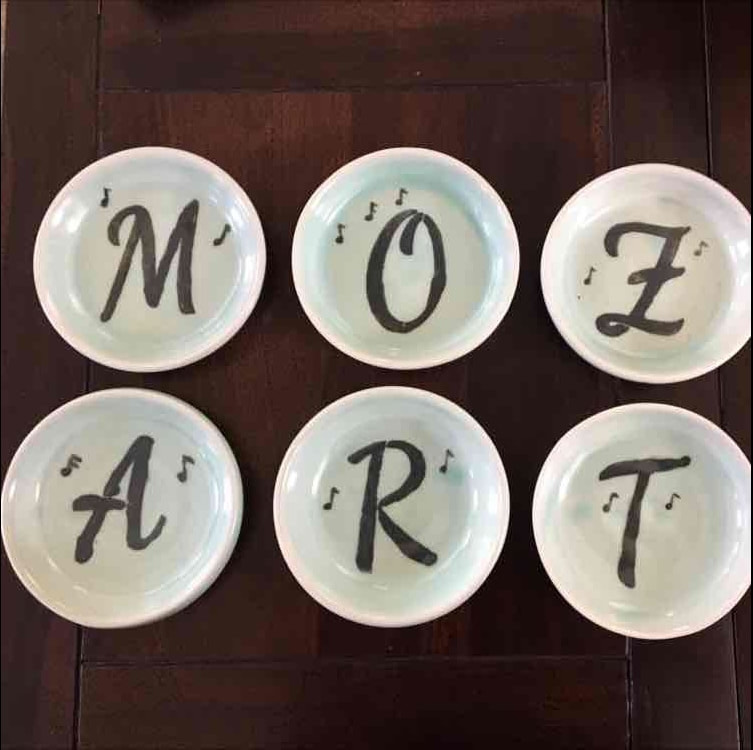
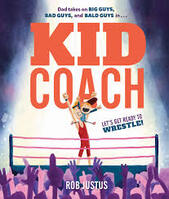
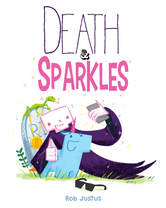
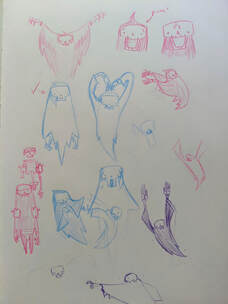
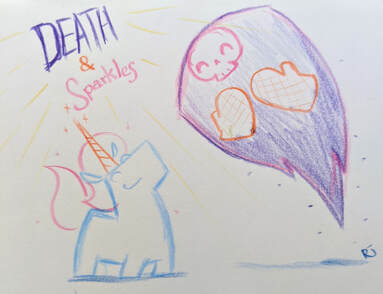
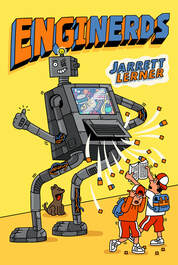
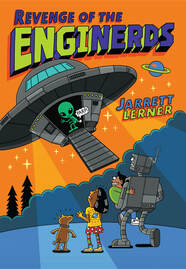
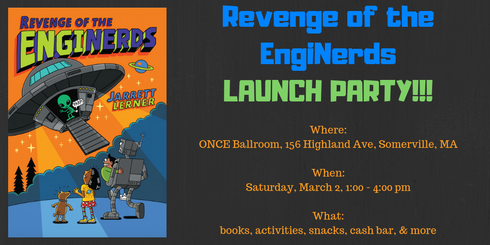

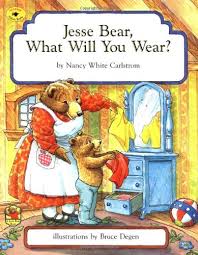
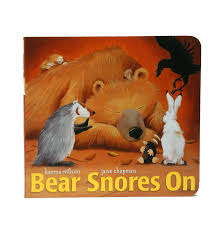
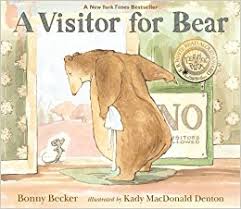
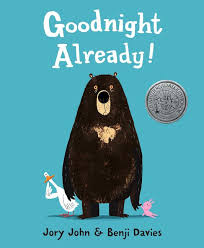
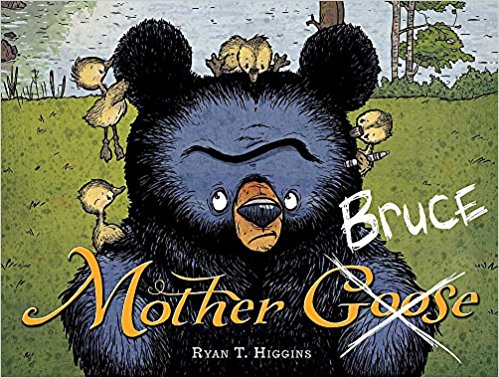
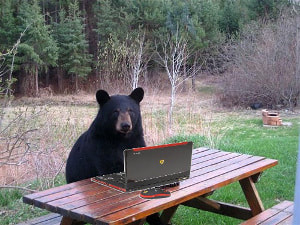
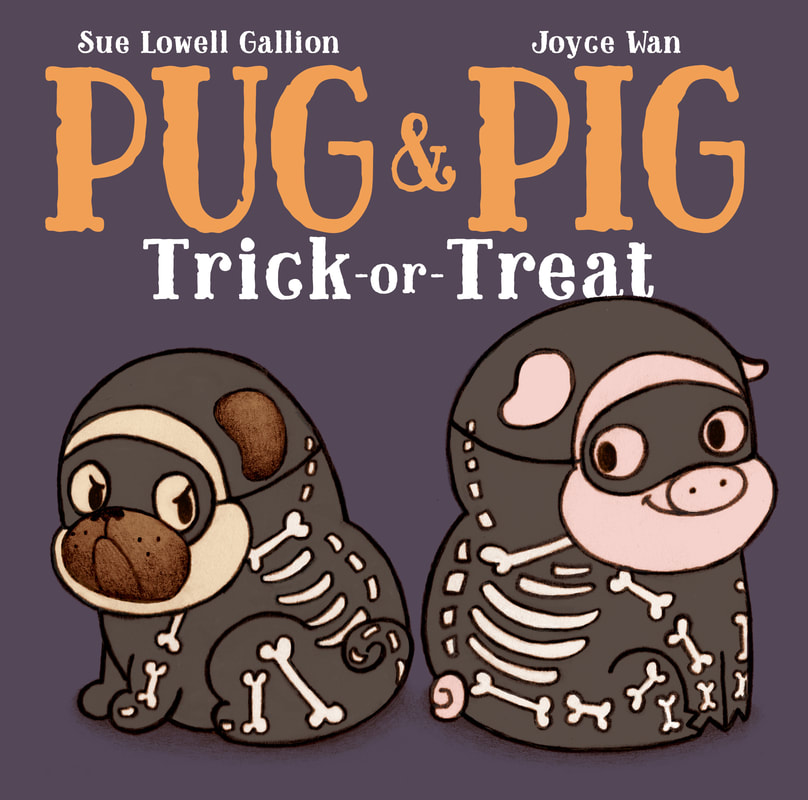
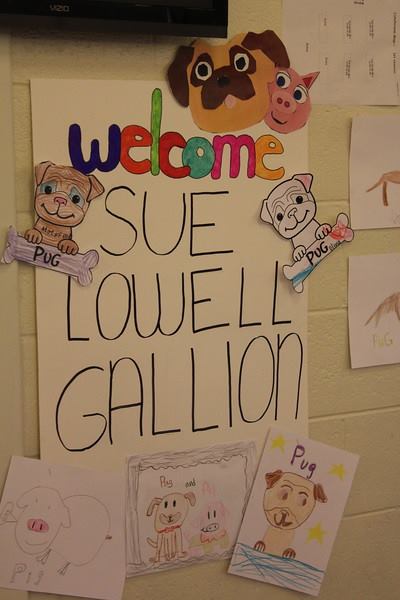
 RSS Feed
RSS Feed